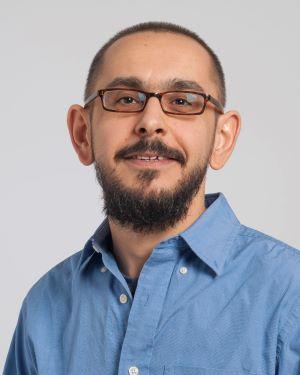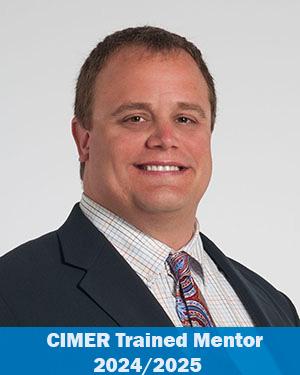Research News
07/29/2024
How quantum computing will affect artificial intelligence applications in healthcare
Quantum computing can enhance AI to make groundbreaking discoveries.

Cleveland Clinic researchers are investigating quantum computing’s potential to unlock the capabilities of artificial intelligence as healthcare’s most complicated problems.
AI is already driving breakthrough discoveries in healthcare and life sciences research. Through implementing AI, Cleveland Clinic’s researchers are developing new medications and treatments to help patients live healthier and longer lives. Although AI is solving problems at an unprecedented pace, quantum computing can work together with AI to solve different pieces of a problem.
Understanding the value of applying quantum computing to AI means learning about each technology’s unique capabilities. Here’s how Cleveland Clinic is using AI and quantum— separately and together — to advance healthcare discovery.
What is artificial intelligence?
AI is a paradigm where computers learn to mimic human intelligence. Datasets train computers to recognize patterns, analyze data and make data-driven decisions just like humans.
You can see AI at work every day in navigation systems, chatbots and your social media feed. These are all examples of computers learning from data to find the best route, solution or content for its users. In healthcare and life sciences, researchers are applying AI across patient care and research, from improving medical devices to learning how diseases affect our bodies.
Cleveland Clinic researchers are using AI methods to identify targets for immunotherapy treatments, prevent super bugs and improve treatment of Alzheimer’s disease. Without AI, it would take researchers years to analyze the enormous amounts of diverse data bought in biomedical research and clinical care. By implementing AI, researchers can quickly identify patterns, create predictions and find solutions in even the most complex data sets.
What is quantum computing?
Quantum computing is an entirely new method of computing. Whether you're using a desktop, laptop, cell phone or smart device – the computer you are using relies on what we call classical computing. Classical computing uses a series of 1s and 0s known as bits to solve problems. You can think of bits as being a yes or no, true or false, on or off. They can be either be one or the other. If you were to challenge even the most powerful supercomputer to solve a maze, it would do so by trying every available path until it found the way out.
A quantum computer does not use bits. Instead, it uses qubits that leverage the properties of quantum mechanics to exist in multiple states at the same time. This means that it is not limited by yes or no, true or false, on or off. A quantum computer solving a maze would not try each path one at a time to find the exit. Instead, it will try each route simultaneously, finding the exit in a fraction of the time.
Quantum computers will eventually be able to solve our most challenging research problems in a fraction of the time it takes our classical computers –beating even the most advanced supercomputers. Cleveland Clinic researchers are currently investigating practical applications and best practices for applying quantum computing to health sciences research through Cleveland Clinic and IBM’s Discovery Accelerator partnership.
How will quantum computing impact artificial intelligence?
“Quantum computing can do computations in a different way – offering a variety of advantages,” says Ahmet Erdemir, PhD, Associate Staff, Center for Computational Life Sciences. “AI methods are currently limited by the abilities of classical computers to process complex data. Quantum computing can potentially enhance AI’s capabilities by removing the limitations of data size, complexity, and the speed of problem solving.”
Researchers are already working on enhancing current AI methods in research by applying quantum computing methods to protein structure prediction. Investigators are focusing on machine learning methods (a subfield of AI) that are very effective at predicting the structure of small proteins but are unable to handle the mass amounts of data and time required for larger proteins. To overcome this limitation, the team developed a new framework that can combine the best of the machine learning methods with the power of quantum computing. As a result, they predicted the folding of a small fragment of Zika virus protein faster and more accurately than state-of-the-art classical computing methods.
“To advance our knowledge of quantum computing, we are starting with problems we know are inadequately solved using classical computing methods,” says Daniel Blankenberg, PhD, Assistant Staff, Center for Computational Life Sciences. “Protein structure prediction is one of the most pressing challenges because classical computers are unable to handle large or mutated proteins. If we can overcome these limitations with quantum computing techniques, it will transform our ability to treat rare diseases and develop personalized medicine.”
Featured Experts
News Category
Related News
Research areas
Want To Support Ground-Breaking Research at Cleveland Clinic?
Discover how you can help Cleveland Clinic save lives and continue to lead the transformation of healthcare.
Give to Cleveland Clinic
